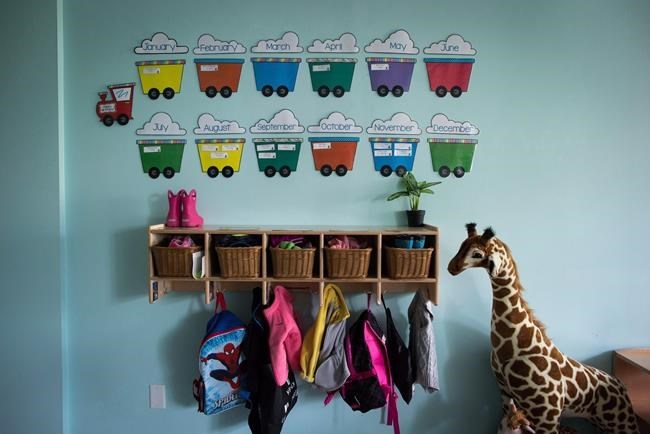OTTAWA — Nour Alideeb and her partner are trying to decide what to do with the hundreds of dollars they're now saving on child care for their two-year-old son.
Parents are seeing their child-care fees reduced by 50 per cent, on average, as part of the federal government's early learning and childcare agreements with provinces and territories.
For Alideeb and her family in Mississauga, Ont., that means about $700 in savings each month.
"Seeing the fees come down, it's like, oh my goodness, I can start saving for his school, we can put money away for maybe home renovation," she said.
"There's just so many possibilities now that you're able to save that money or put it towards other things."
The Liberal government earmarked $30 billion over five years in the 2021 budget to set up a long-promised national child-care program.
Under the agreements between the federal, provincial and territorial governments, fees will come down to $10 a day, on average, by 2026.
As parents breathe a sigh of relief, however, some in the child-care industry are ringing alarm bells over concern there won't be enough spaces to meet demand.
"What I'm worried about is staffing," said Lyndsay Macdonald, a professor of early childhood education at Humber College and a co-ordinator with the Association of Early Childhood Educators Ontario.
A shortage of early childhood educators has been an ongoing issue, leading to long wait-lists even before the national program was rolled out. Now, as fees fall, rising demand might make it even more challenging to secure adequate staffing.
The program stipulates that provinces must create new spaces with the money they're receiving from the federal government. In total, the deals are supposed to add about a quarter of a million new spots across the country.
But it might not be enough.
Ontario's financial accountability officer published a report in November warning increased demand will leave the province short more than 220,000 spots under current expansion plans.
A spokesperson for Employment and Social Development Canada said the federal government has allocated money to attract and retain workers.
"All provinces and territories have the opportunity to provide additional resources to support the workforce," the spokesperson said in a statement.
Workers and advocates say wages are a key problem. According to the 2021 census, early childhood educators and assistants made an average of $26,760 a year.
That's making the job unappealing, said Macdonald.
"My students are seeing, wow, this job requires a lot of professionalism and a lot of responsibility and a lot of work — hard work," she said.
Some provinces have raised wages, while others have committed to creating wage grids.
A report published by the University of Toronto's Atkinson Centre in April highlights the recruitment and retention challenges. It found 62 per cent of child-care centre operators in Canada had to recruit staff in the last two years and 82 per cent had difficulty hiring staff with the necessary qualifications.
It also found that in Ontario, the majority of early childhood educators who resign are seeking employment outside of a licensed child-care centre.
Marni Flaherty, the interim CEO of the Canadian Child Care Federation, said she wants to see a stronger commitment to the workforce, with pay and career development playing a role to maintain it.
"It's really hard to build a system of people only coming in, working for a few years, and then going to doing something else," Flaherty said.
Beyond that, Flaherty said ensuring there are enough spaces also means working on the local level to make sure resources are being allocated well.
Flaherty said that includes thinking about things like the placement of child care centres in neighbourhoods, the optimal size of operators and the supporting infrastructure in communities.
"At this point, we should be looking at … how are we going to make this happen?"
This report by The Canadian Press was first published Jan. 5, 2023.
Nojoud Al Mallees, The Canadian Press




